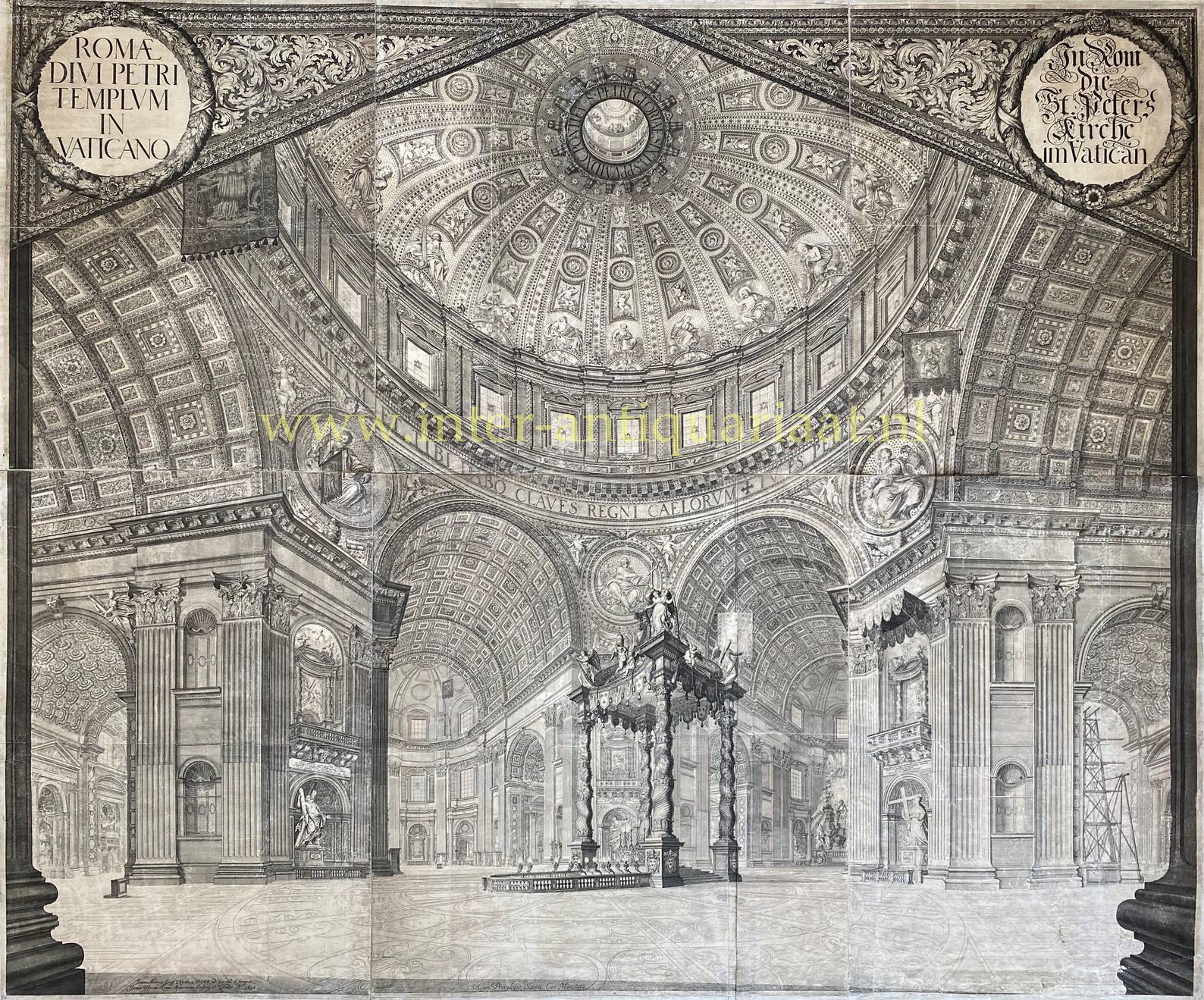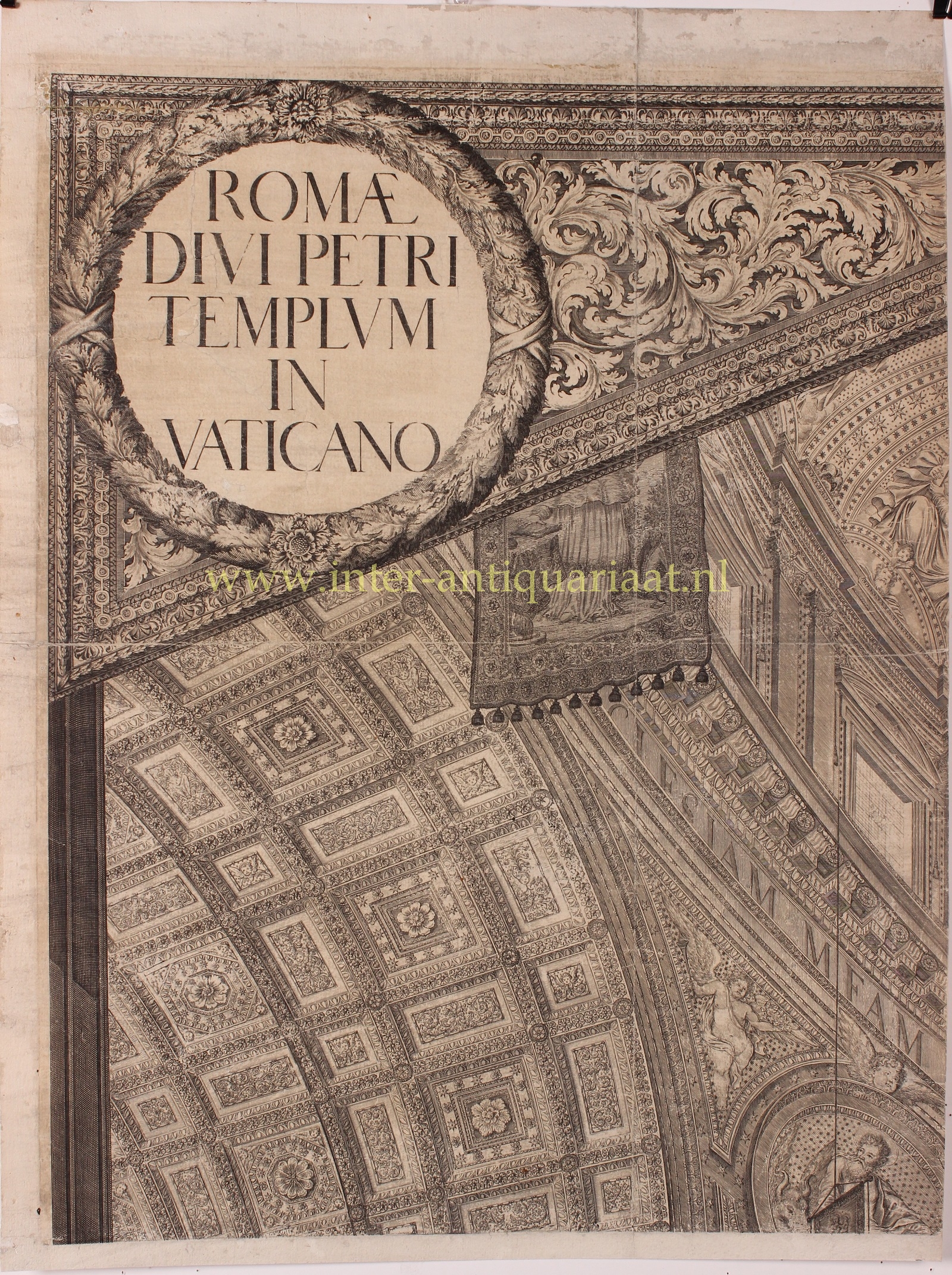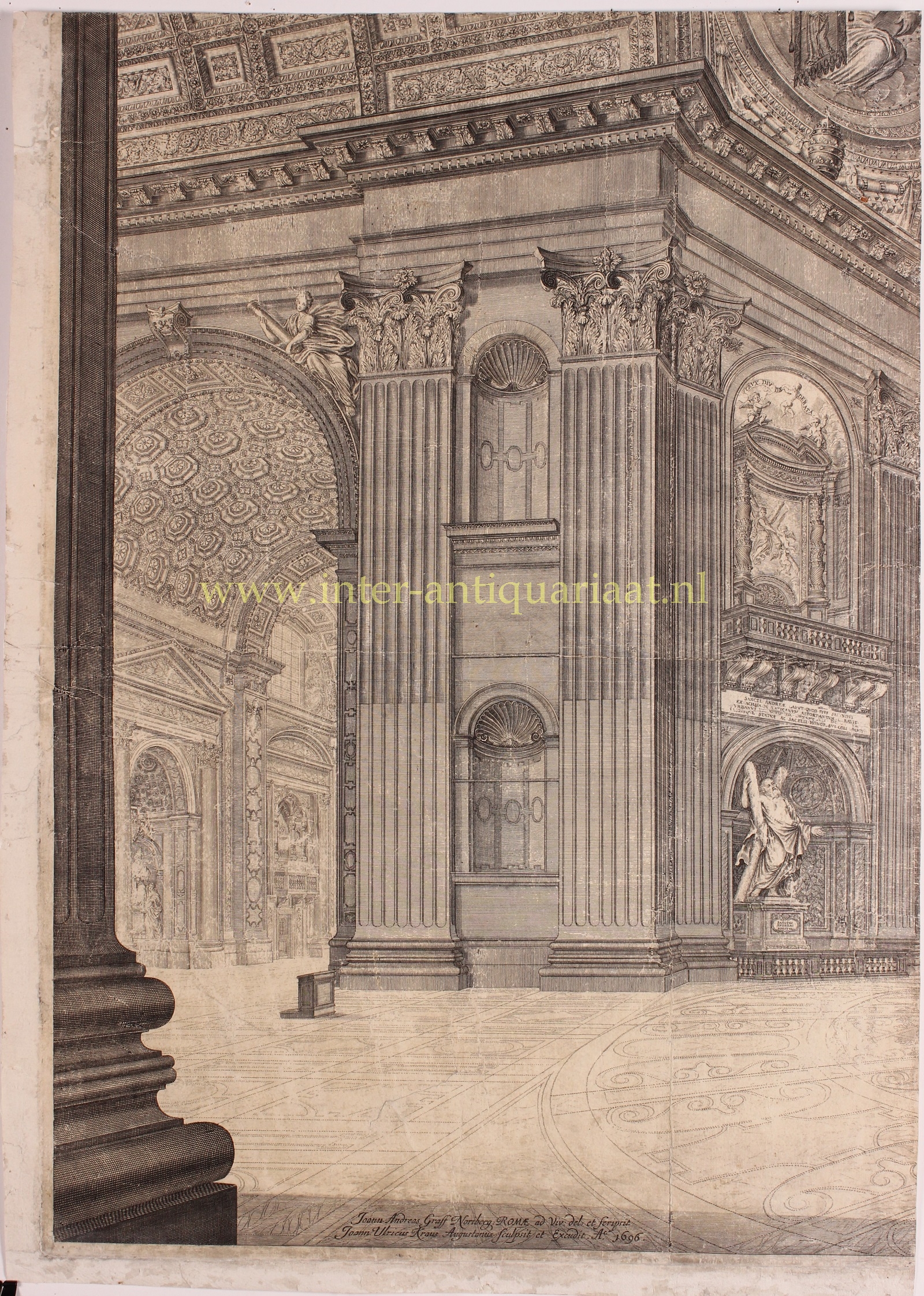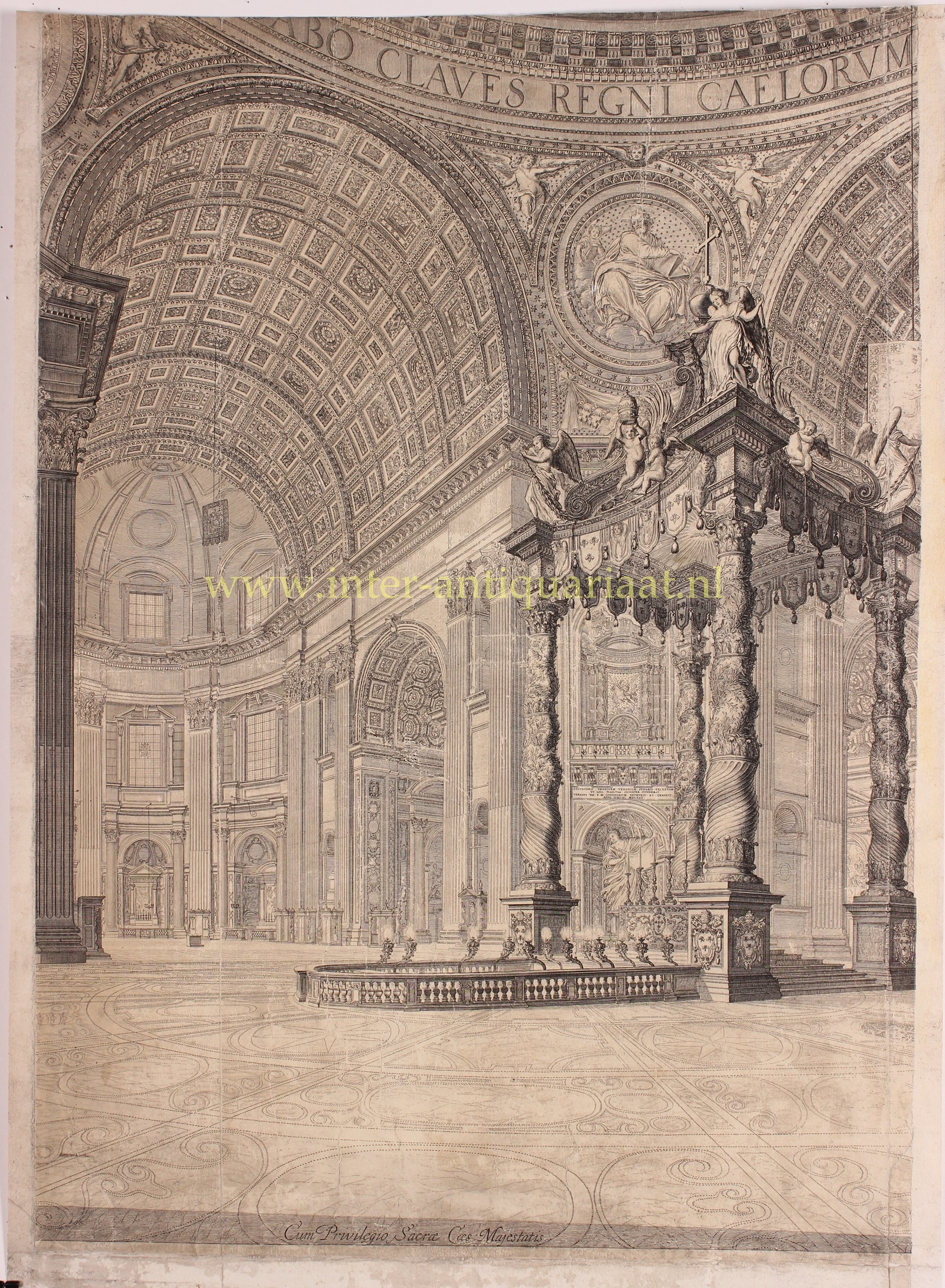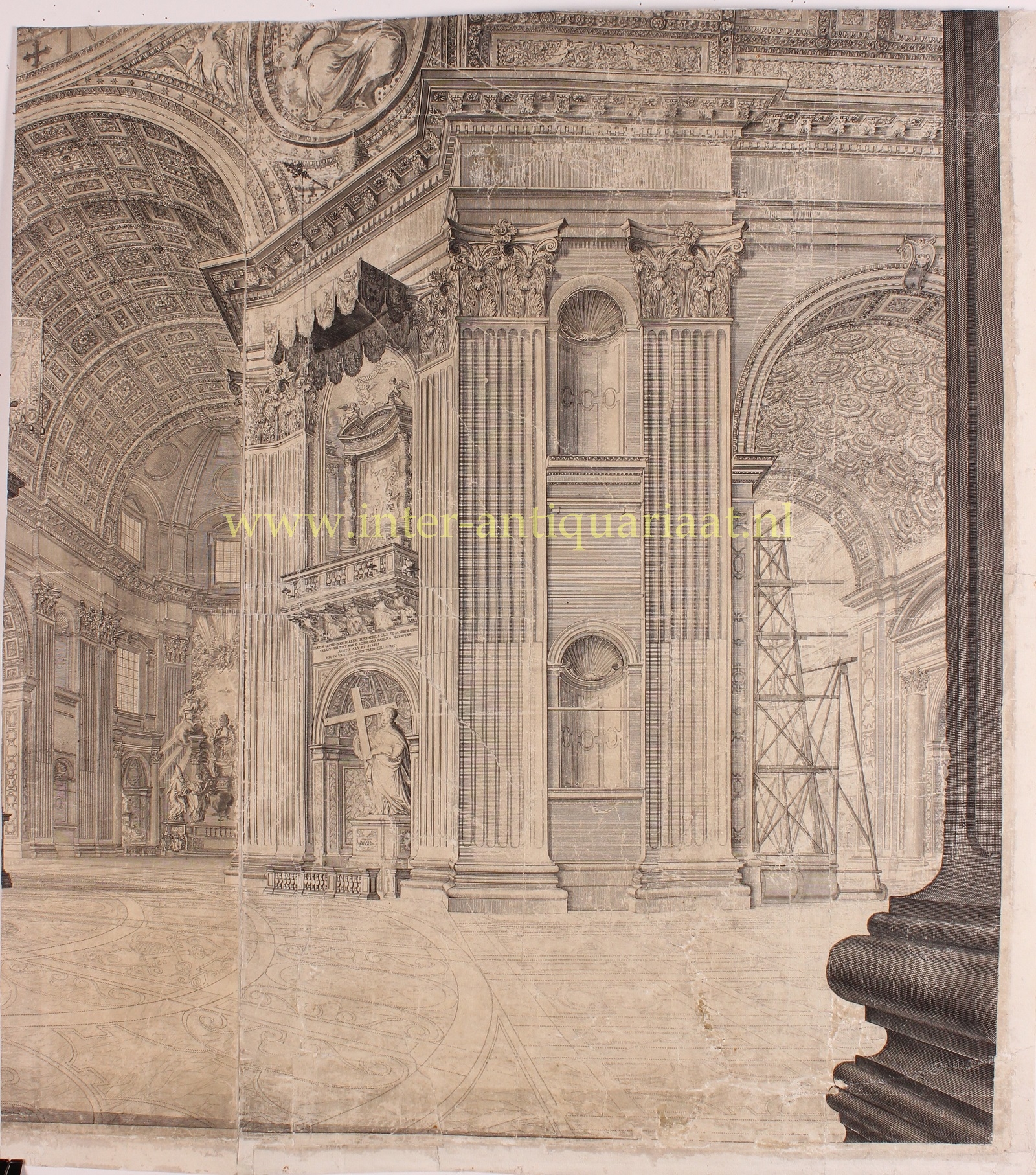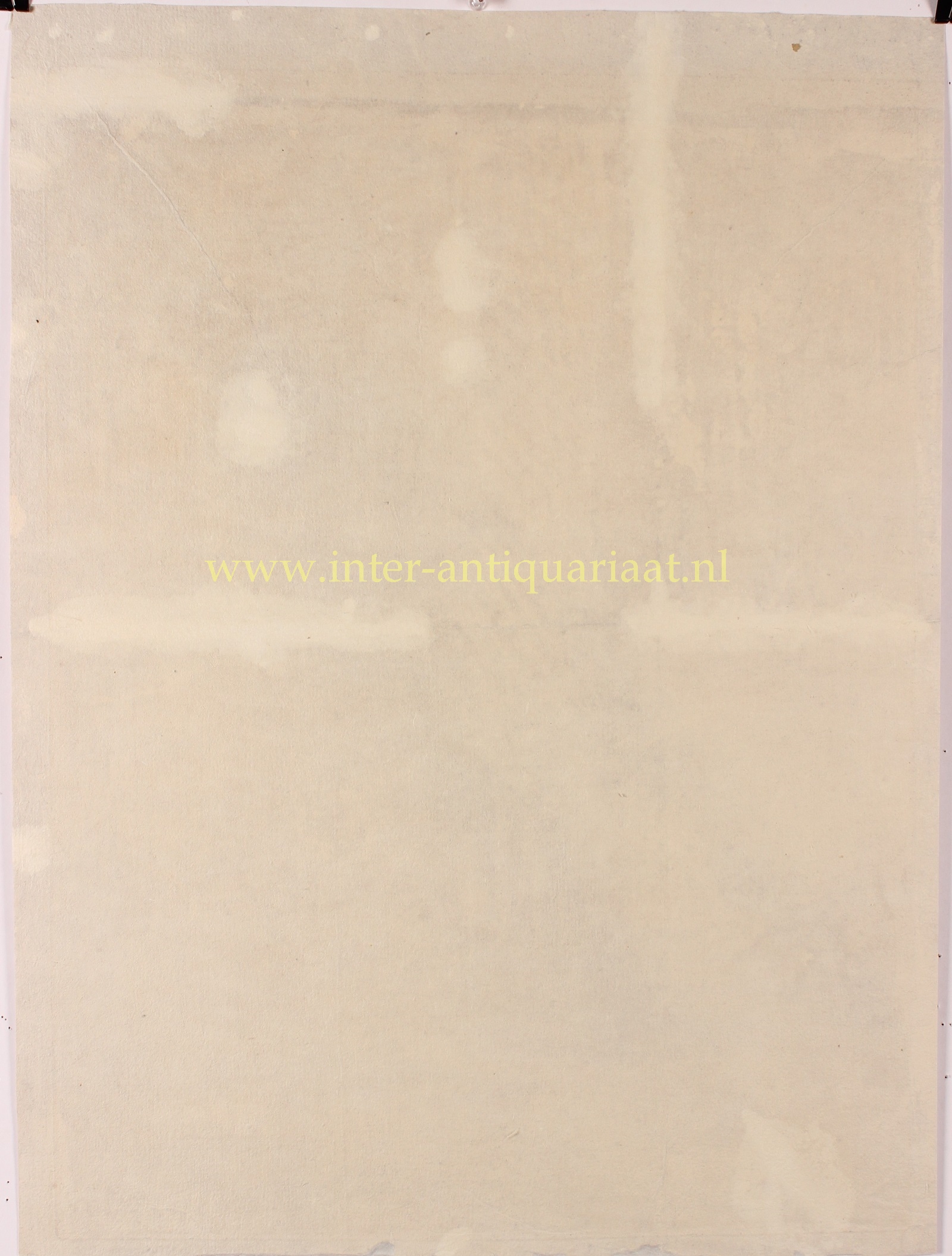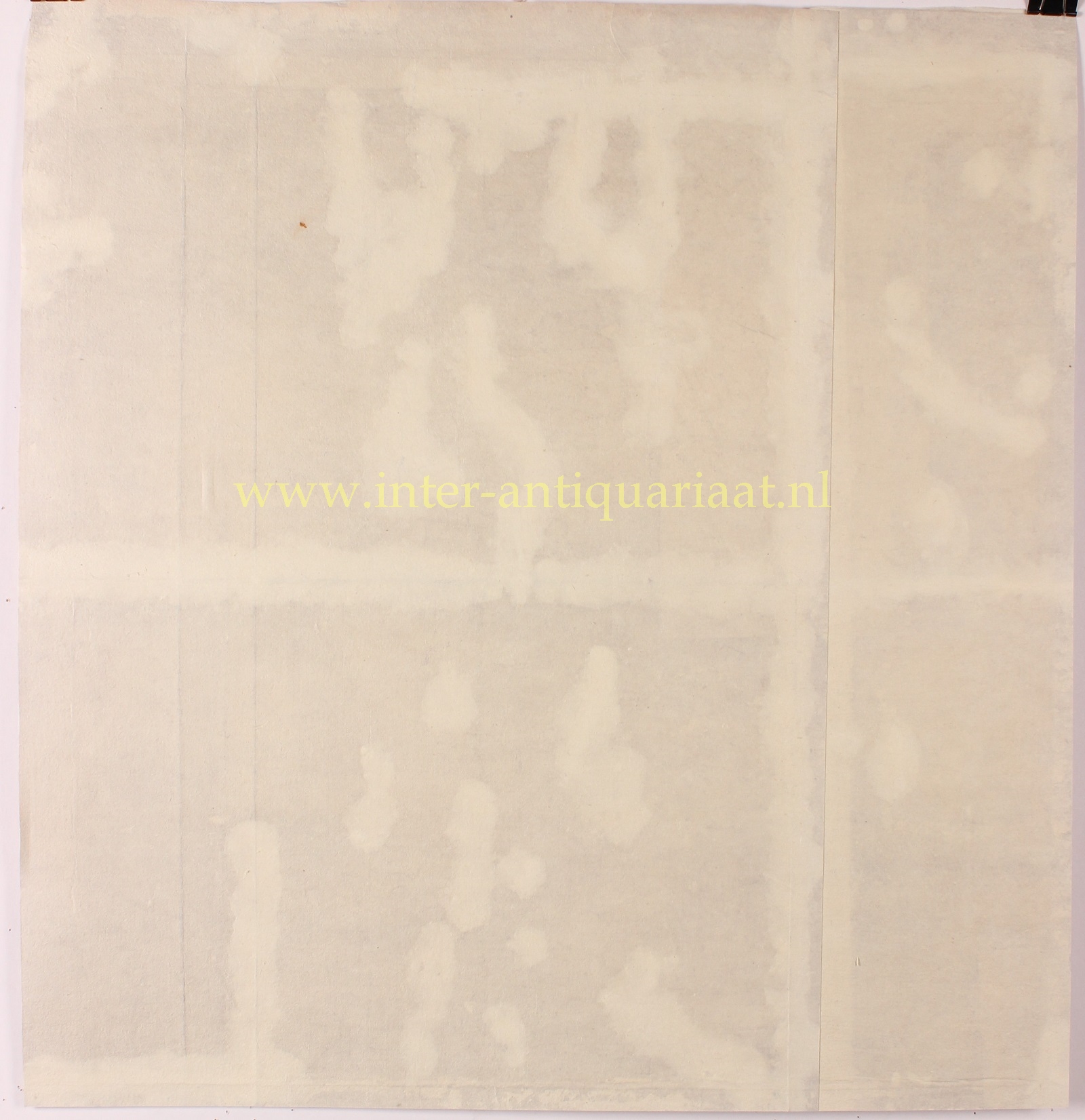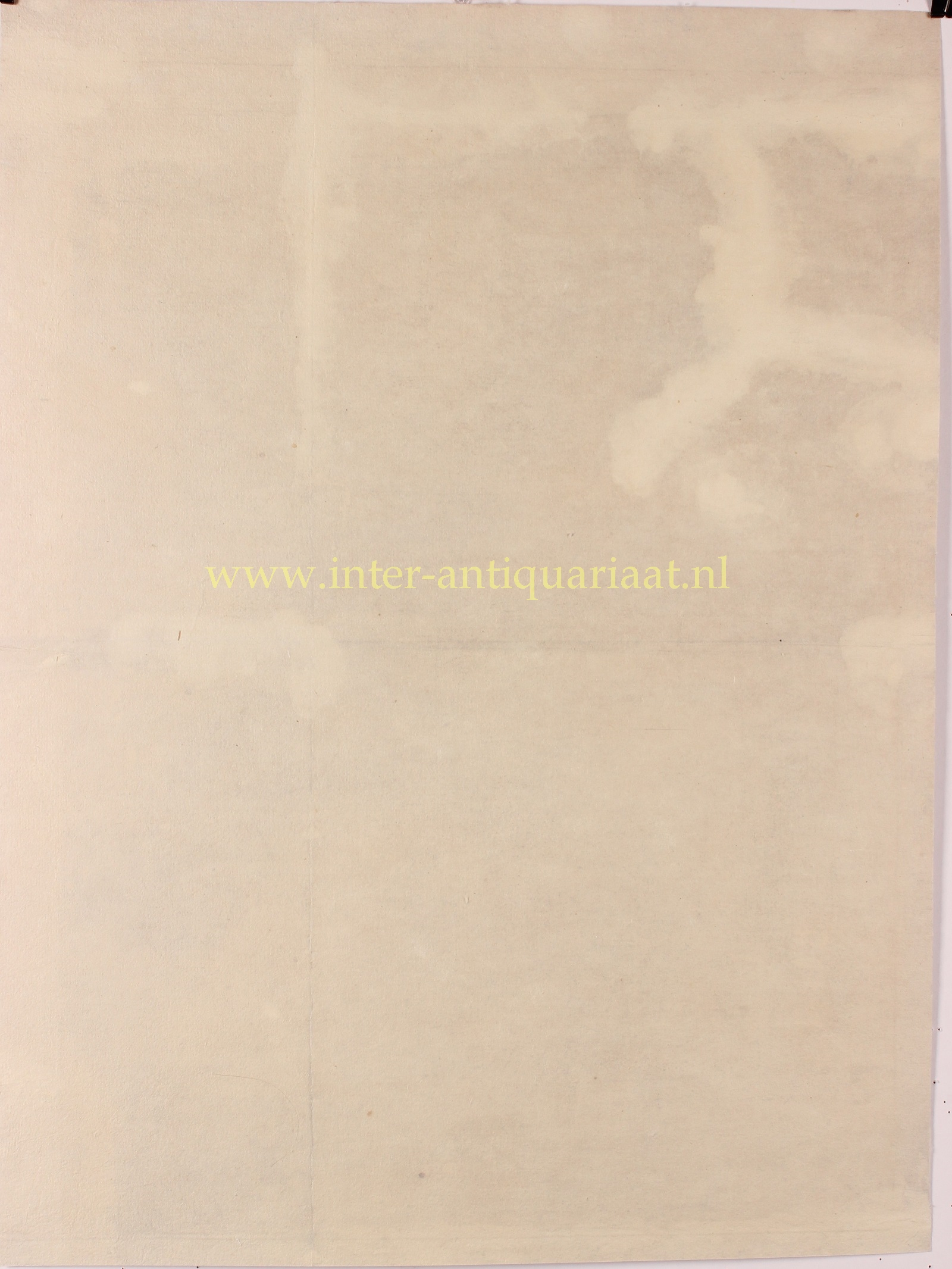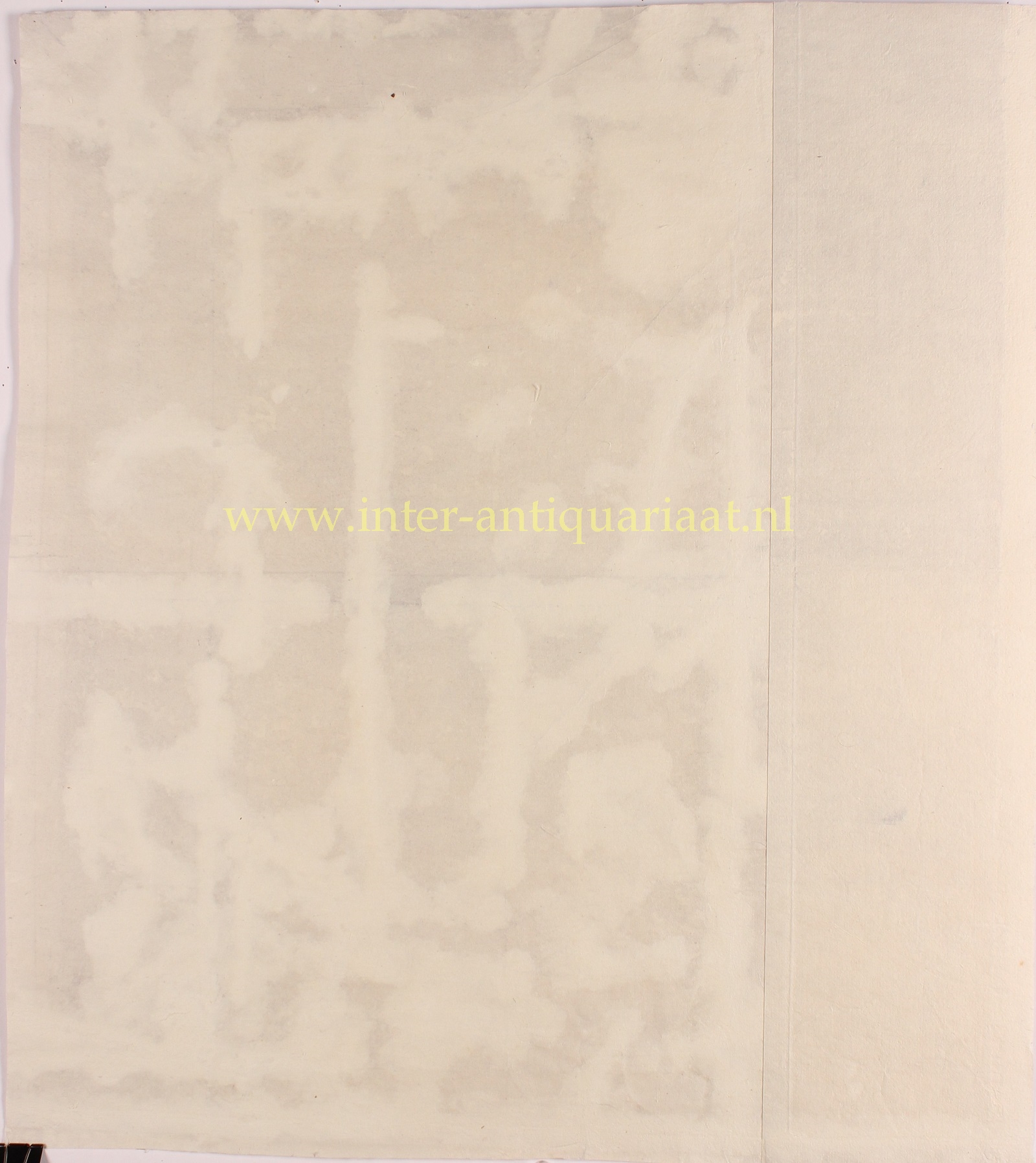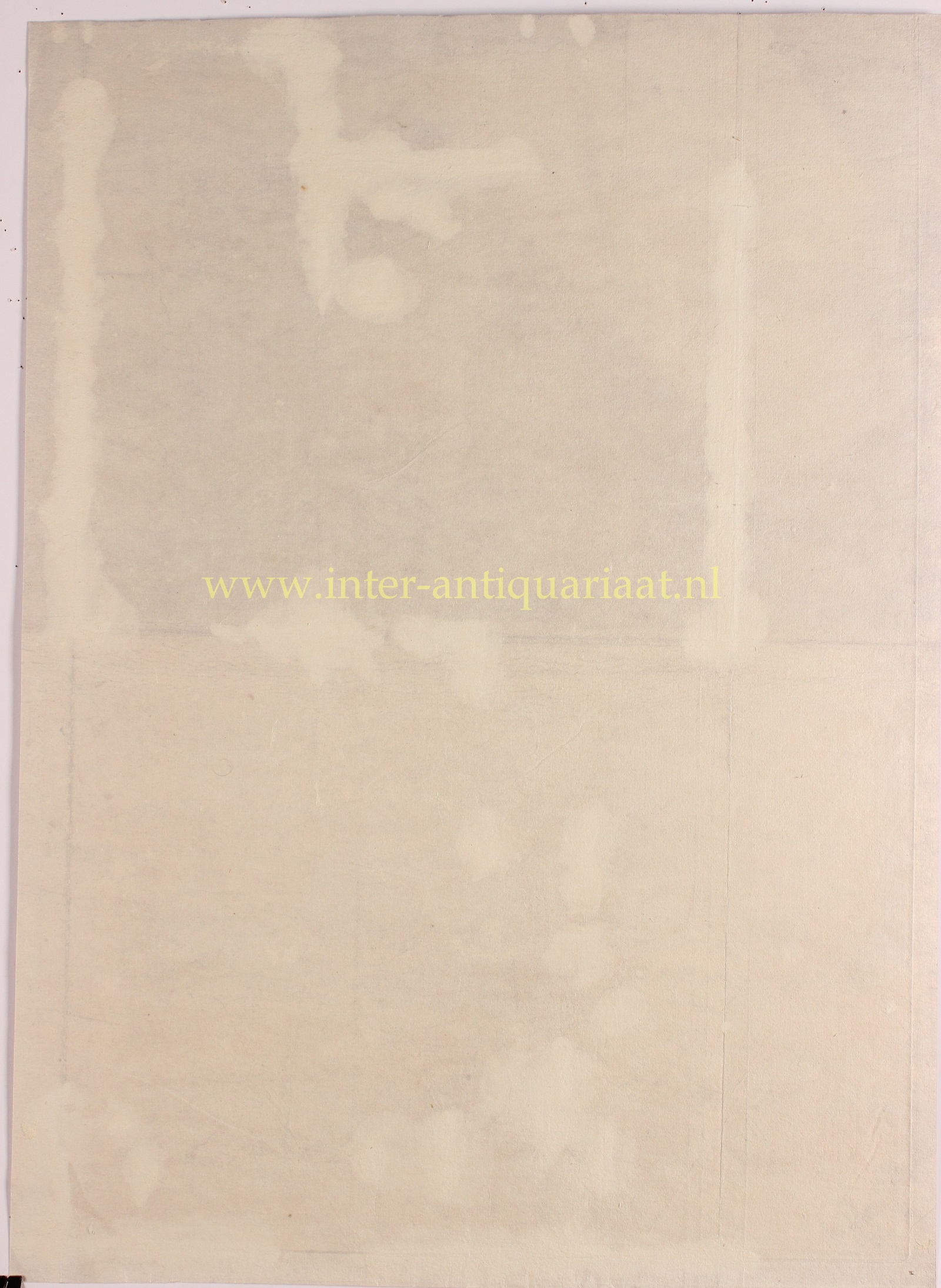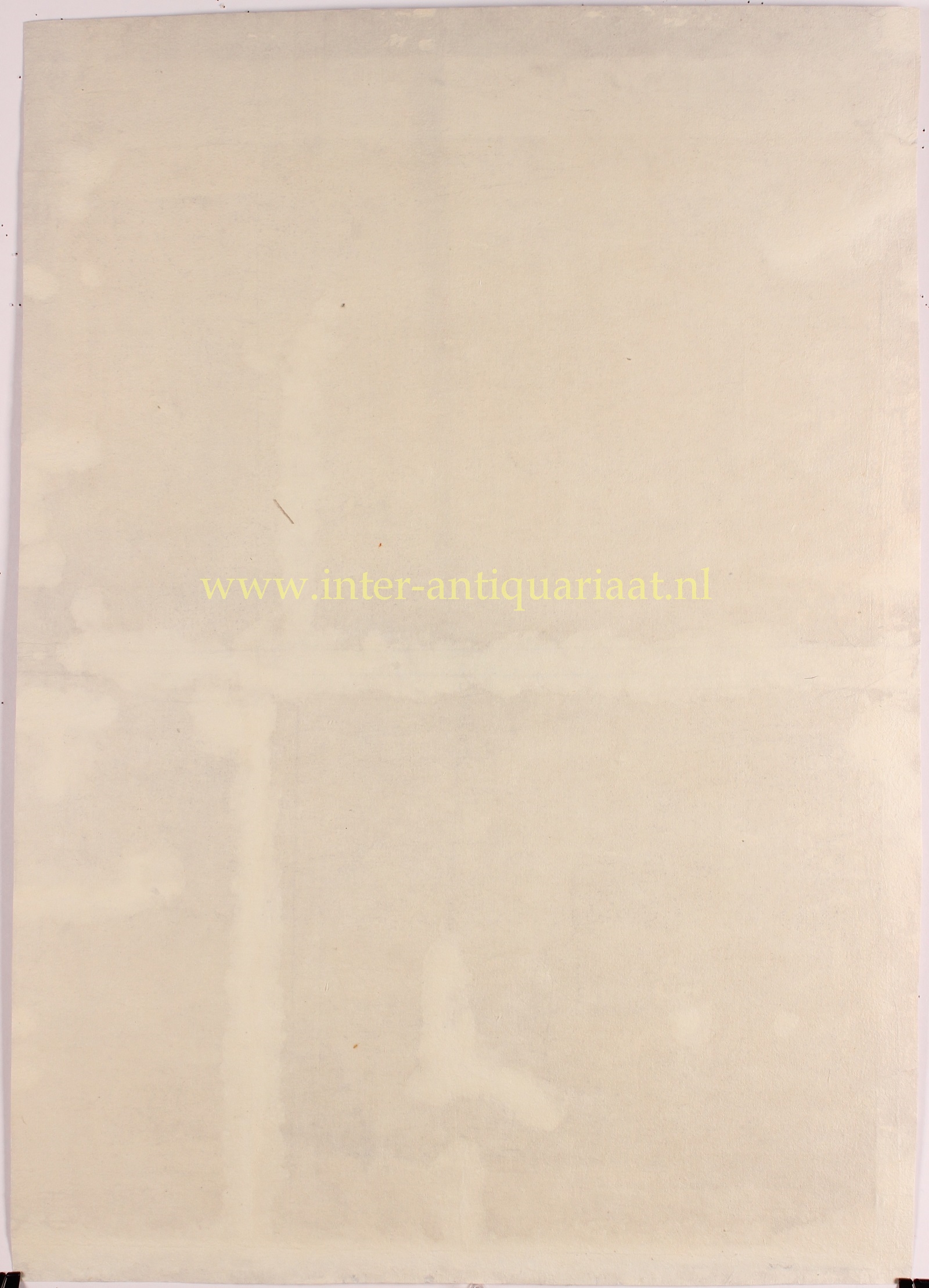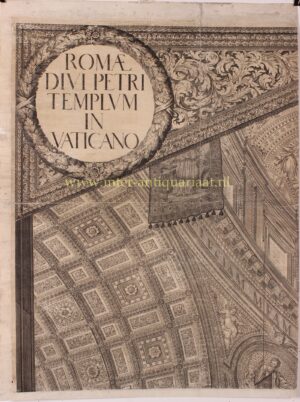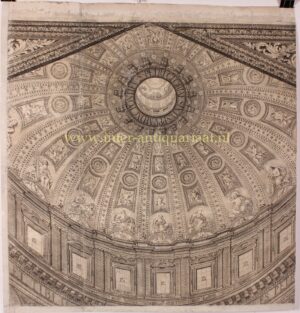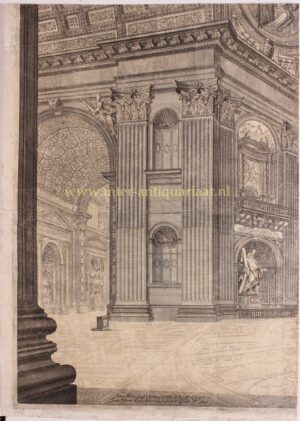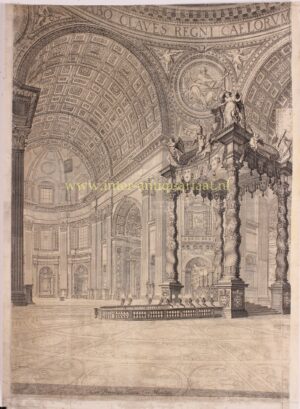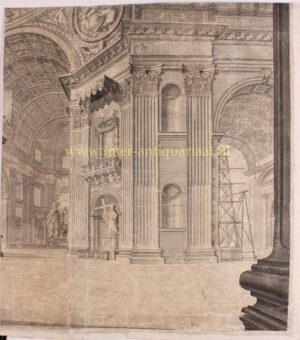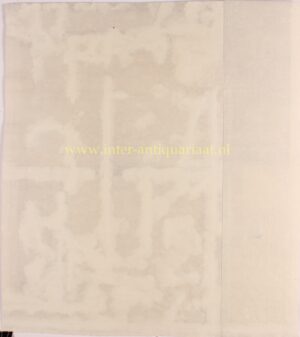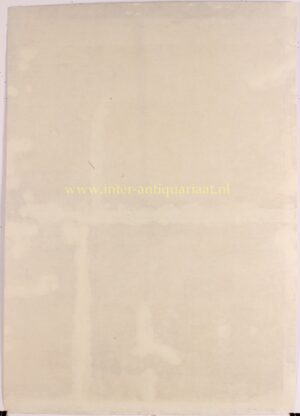STUNNING LARGE PIECE OF ST. PETER’S BASILICA INTERIOR
“Romae Divi Petri Templum in Vaticano. In Rom die St. Peters Kirche im Vatican“. Engraving on 6 loose sheets made in 1696 by Johann Ulrich Kraus after Johann Andreas Graff. Total size: 135,5 x 162,5 cm.
Johann Ulrich Kraus (1655–1719) was born to a widely dispersed family of artists and artisans. He was a student of Melchior Küsel (1626- ca.1683), who was in turn a student of Matthäus Merian the Elder. Kraus became a partner in the Augsburg publishing company of Melchior Küsel, whose daughter Johanna Sibylla he married in 1685. Kraus became one of the most successful and respected engravers and publishers of his generation in Augsburg. Kraus himself never visited Italy, although he created numerous views of Rome.
This intricately detailed and wall-sized engraving of St. Peter’s Basilica fully captures the depth and beauty of the architectural and spiritual centre of the Roman Catholic Church.
The print was made during the rule of pope Innocent XII and shows us the inside of Michelangelo’s dome of St. Peter’s Basilica towards the south transept and apse. In the centre there is St. Peter’s Baldachin by Gian Lorenzo Bernini, the large Baroque sculpted bronze canopy, over the basilica’s main altar. The baldachin is directly under the dome of the basilica, it is intended to mark the place of Saint Peter’s tomb underneath. On top of the baldachin four angels stand at the corners.
Around the inside of the dome is written: “TV ES PETRVS ET [SVPER HANC PETRAM AEDIFICABO] ECCLESIAM MEAM. ET TIBI DABO CLAVES REGNI CAELORVM” [“You are Peter, and on this rock I will build my church. And I will give you the keys of the kingdom of heaven.”]
Set in niches within the piers supporting the dome, are statues of (on the right) Saint Helena holding the True Cross, the Apostle Andrew (on the left) and (behind St. Peter’s Baldachin) Saint Veronica.
The interior view of St. Peter’s Basilica in Rome presented here, impressive in its size and detail, was engraved by Kraus after an example by his Nuremberg colleague Johann Andreas Graff (1636-1701), who visited Italy in the 1660s and must have made drawings of the basilica there. However, the final drawing for this large-scale view has not yet been discovered or not been preserved.
Especially ingenious is Graff’s idea of the “diagonal perspective.” Unlike the centered view from nave to choir, familiar from 17th century engravings of Roman churches, it is as if the viewer is standing at one of the crossing pillars and looks from the northeast through the columns of the baldachin over to a dome pillar, to either side of which a transept opens. Draftsman Graff worked as if he had a “fisheye” or “wide-angle” lens to visually capture much more of the interior than the viewer could have with the naked eye. Kraus explains this fact in his legend indicating that the view deviates from the “ordinary perspective”.
There are two engravings of St. Peter’s Basilica by Kraus that differ significantly in details and format. The first, large-format variant, as (partially) presented here, was printed from no fewer than 12 plates and measures assembled 183 x 162.2 cm. The view of the interior is composed of six plates, followed by five additional views of the basilica and St. Peter’s Square from three plates, and a written legend from another three plates. Mounted as wall decoration, the work had the size of a substantial painting. The legend beneath the depiction was written in both Latin and German, and the dedication was to Bishop Johann Philipp von Lamberg, who was elevated to cardinal in 1700.
Success however, so the story goes, remained elusive and frustrated by limited sales, Kraus destroyed the copper plates. Shortly after the destruction of the plates, Kraus received a large order – which he could no longer fulfill and could only sell the few prints he had previously made. Kraus then produced a smaller reprint in two versions (Diefenbacher, New Hollstein 104-106, Introduction xxxv-xxxvii). In the smaller variant, Kraus added audience and festive decoration to the interior, on the occasion of the canonization of Pope Alexander VIII (October 16, 1690) (See on the history of the copper engraving: Eckhard Leuschner, “Aus Rom nach Augsburg via Nürnberg“, in: “Der Augsburger Kupferstecher und Verleger Johann Ulrich Kraus (1655-1719)“, Vienna 2021, pp. 152-164.)
The six engravings of the large variant here are loose sheets are trimmed and prepared for mounting. St. Peter’s Basilica in Rome is considered the greatest of all churches of the Christian world. This impressive six sheet engraving proves it really is.
The imperial folio print (mentioned by Thieme/Becker vol. XXI, p.442) has numerous restorations but is a stunning piece nevertheless and of great rarity. The New Hollstein only mentions two collections, Dresden and Vienna, which possess this interior view of the large version – however, also incomplete without a legend or the additional five views.
Price: Euro 6.500,-


